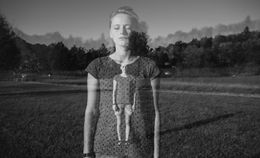Cancer - The word could mean one of two things:
Zodiac: The word cancer could be referring to the fourth sign in the astrological zodiac calendar.
-
Health Condition: The word cancer could be referring to a health condition.
On one hand, astrologically, the word cancer may evoke feelings of curiosity. On the other hand, the word cancer in the health and wellness realm may evoke feelings of fear and anxiety. Fear and anxiety can be normal human emotions when facing the unknown - especially in the case of the health condition of cancer.
In this article, we will be learning about cancer, what it is in regards to a health condition, its symptoms, causes, and holistic complementary health treatments to consider if you are in the midst of a cancer battle.
Let's get started . . .
What is Cancer?
Are you wondering, what exactly is cancer? Here are two key factors for understanding what cancer is:
-
Cancer in the medical use of the world: Is used to describe a group of health conditions where abnormal cells divide and attack both the human body and its immune system.
-
Cancer cells invade through: Tissues in the human body and spread through both the lymph system and bloodstream.
11 Symptoms of Cancer
What are the first signs of cancer? Symptoms of cancer can differ between women and men. Signs and symptoms of cancer can also vary depending on the type of cancer and the age of the person concerned about potentially having cancer. However, here are eleven early symptoms of cancer that you can be on the lookout for from moles, to unexplained bruises or fatigue. Want to know all about the eleven different symptoms of cancer, so you can be prepared and know what to look for? Read: 11 Symptoms of Cancer.
Next, let's explore and learn about the different types of cancer . . .
Types of Cancer
Some people want to know the answer to the question: How many kinds of cancer are there? There are many kinds and types of cancer. In fact, according to the National Cancer Center, there are over 100 types of cancer - here is a list of the most prevalent types of cancers in the country:
Breast cancer
-
Lung cancer
-
Prostate cancer
-
Colon cancer
-
Rectum cancer
-
Skin cancer
-
Bladder cancer
-
Non-Hodgkin lymphoma
-
Kidney
-
Renal pelvis cancer
-
Endometrial cancer
-
Leukemia
-
Pancreatic cancer
-
Thyroid cancer
-
Liver cancer
How Cancer is Named
The type of cancer a person is diagnosed with depends on two factors:
Location
Often times, during diagnosis, cancer is first found in a particular part of the body. This is where the cancer is perceived as fist forming in that particular cancer patient and so cancer within their body is identified and named for that body part. Hence, cancer names like brain cancer or cervical cancer.
Cells:
Other times cancer is named and identified by the cell type that it is formed by.
Consequently, people often ask: What are the 2 types of cancer cells? A study published in the Medical Hypotheses Journal found that the 2 types of cancer cells are:
Maturable: Maturable cancer cells are the type of cells in tissue, bone, or blood that need treatment to remove the cancer cells from the body.
Non-maturable: Non-maturable cancer cells are the type of cells in tissue, bone, or blood that can lead to cancer in the body through the process of oncogenesis.
The challenge with cancer treatment is that at this point, treatment for cancer only works to destroy maturable cancer cells. In this way, research and science are still working on cancer treatment and therapy option that would treat non-maturable cancer cells before they go through the process of oncogenesis.
With an understanding of the early signs of cancer, the next step in developing a knowledge of what cancer is leads to the question: What causes cancer?
Causes of Cancer
What element causes cancer? This is a question that is often asked by many people.
If there was only one cause of the different types of cancer, preventing cancer would be fairly straightforward. The truth is, there are many causes of cancer that have been identified through research and studies. According to this one study, there are eleven main causes of cancer:
Aging
-
Family history
-
Smoking
-
Alcohol
-
Sunlight and ionizing radiation
-
Organic and inorganic chemicals
-
Viruses and bacteria
-
Hormone therapy
-
Obesity and diet
-
Air and water pollution
-
Gene mutations
The causes may fit into one of the following three categories:
Environmental factors
-
Lifestyle choices
-
Genetic factors
Sometimes the causes for cancer lap. What this means, is a person may have a genetic factor that raises their risk for developing cancer one day, and also be living in an environment or choosing a habit or life choice which increases a person's risk factor of developing cancer at some point in their life simultaneously. So what elements may fall under each category of causes of cancer?
Let's start with the environmental causes of cancer . . .
Environmental Causes of Cancer
From water and air pollution, mold, to chemicals used at work environments, there are are many different environmental causes of cancer. The state of California has Prop 65 in place to help educate and provide people information so that they can make decisions based on their needs. However, what has science and research discovered so far about the environmental causes of cancer? For a detailed overview, read: Environmental Causes of Cancer.
Now let's discover the link between genetics and the environmental factor of cancer development . . .
The Connection Between Genetics and Environmental Factors of Cancer Development
There have been studies that have found the risk level of environmental factors have an impact on potential cancer development and how it is connected to genetics. For example, the study found that if a person with one of the following gene mutations may have a greater level of difficulty fighting off the development and growth of cancer cells associated with environmental factors. This is where you can start to see the potential overlap of cancer categories.
On that note, let's find out what is known about genetic causes and factors of cancer development . . .
Genetic Causes of Cancer
Genetics have not been found to directly cause cancer. It is more genetic alterations that have been found to play a role in what can lead to the development of cancer. Interestingly, just because a genetics test may reveal that particular person's genetic makeup has one the known genetic alterations and mutations known to lead to cancer - it does not translate to a known fact that the particular person will with absolute certainty develop the cancer type associated with a gene alteration and mutation.
What it does mean is that any person whose genetic makeup has any of the known gene alterations or gene mutations connected to cancer development have a greater risk level of developing cancer in their lifetime. According to the National Library of Medicine, this is what is referred to as either:
Genetic predisposition
-
Genetic Susceptibility
According to this consensus of human cancer genes , there are over 291 human gene alterations and mutations associated with the possible development of different types of cancer. Here is a list of thirteen of the 291 possible genetic causes and factors in cancer development:
TGF-β
TGF-βRII
FHIT
-
WWOX
-
FRA3B
-
FRA16D
-
CDKN2A
-
PTEN
-
APC
-
NIH-3T3
-
STK11
-
BRCA1
-
BRCA2
What about cancer causes and lifestyle choices? Let's take a look . . .
4 Lifestyle Choices that may Lead to Cancer
The four major lifestyle choices that have been identified as causes of cancer are:
Smoking
-
Alcohol
-
Diet
-
Obesity
Each of these four lifestyle choices, when avoided, can help prevent cancer. If you would like to know more about each of these four lifestyle choices and how each one can be linked to being a cause of cancer, read: Lifestyle Choices that may Lead to Cancer.
Cancer Statistics
Here is a list of six statistics on cancer for 2019:
Projected new cancer cases: 1,762,450
-
Projected cancer deaths: 606,880
-
Women Cancer occurrence rate: Has stayed stable over the last decade
-
Men Cancer occurrence rate: Has declined in men by 2% over the last decade
-
Overall death rate from cancer: Has dropped by 27% over the last decade.
-
More cancer survivors: Because of the drop in the overall number of deaths from cancer, approximately 2,629,200 cancer patients over the last decade are now cancer survivors instead of a part of a cancer death statistic.
Now let's take a look at cancer survival rates . . .
Cancer Survival Rates
Over the years, cancer survival rates have changed. The chances of a person's cancer survival rate is dependent on the following five factors:
Type of cancer
-
Stage of cancer at diagnosis
-
Treatment plan
-
Country of residence
-
Age
5 Phases of a Cancer Battle
There are five phases of the battle with cancer:
Discovery: Not feeling well, you and your doctor start discovering signs and symptoms that lead to questions. Or it could be through yearly routine examines where cancer cells are discovered.
-
Diagnosis: A diagnosis is given leading to what may feel like a fast-past whirlwind where there is a lot of information to take in and choices to make for treatment.
-
Treatment: Treatment for cancer is experienced from radiotherapy, chemotherapy, and possibly surgery.
-
Remission: This is a time in the battle with cancer where there is a reduction of symptoms and signs of cancer.
-
Cured: Because there is a chance of cancer returning after a person has entered remission, often times, for cancer to be considered cured, a cancer patient usually needs to be in remission for five consecutive years or more.
Now that you have an understanding of the phases of a cancer battle and what conquering cancer looks like, let's take a deeper look at cancer treatments holistic ways of supporting a cancer patient through their battle with cancer.
Mainstream Cancer Treatments
Some people want to know, what is the most common way to treat cancer? The most well-known type of cancer treatment is chemotherapy. Although it is not the only way that cancer is treated. A treatment plan varies from cancer patient to cancer patient and from cancer case to cancer case. Any cancer treatment plan can include any combination of the following eight treatment types:
Chemotherapy
-
Surgery
-
Precision medicine
-
Stem cell transplant
-
Targeted therapy
-
Hormone therapy
-
Immunotherapy
-
Radiotherapy more commonly called radiation therapy
Now let's look into possible side effects that may be experienced cancer treatment . . .
Side Effects of Cancer Treatment
As each of the eight treatment types of cancer treatments works to help the body fight a battle with cancer - each treatment type also comes with side effects. Many of the side effects overlap from one cancer treatment type of another. Here is a list of side effects of cancer treatments overall:
Nausea
-
Vomiting
-
Loss of appetite
-
Fatigue
-
Pain
-
Distress
-
Anxiety
-
Depression
-
Fear
-
Challenges with sleep
-
Future fertility challenges
Next, let's learn about the role complementary and alternative medicines play in a battle with cancer . . .
Cancer and the Role of Complementary and Alternative Medicines?
There is a destructive role that complementary and alternative medicines play in cancer treatment. Want to know the difference?
Alternative medicines and treatments: Alternative medicines and treatments for cancer do not work with the eight most common treatment options used by doctors and hospitals like chemotherapy, surgery, and radiation.
Complementary medicines and treatments: Complementary medicines and treatments for cancer work with the eight mainstream cancer treatments used in cancer treatment plan for a person in the midst of a cancer battle. Essentially complementary treatment options help cancer patients manage the side effects associated with cancer treatments for cancer.
So which complementary treatments may be helpful in supporting a cancer patient through their battle with cancer . . .
What are Some Complementary and Holistic Treatments for Cancer?
Here is a list of 10 supportive treatments you can try to help yourself foster and build positive emotional health and in turn decrease the stress risk factor of developing Crohn's disease:
-
Guided meditation
-
Tai Chi
Now that we have an idea of the many different complementary and holistic treatment options that are available for cancer patients, let's look at what should be considered when thinking about such holistic therapies for supporting cancer patients through their battle. . .
What Should Cancer Patient do When Using and Considering CAM Therapies?
When a cancer patient is considering complementary therapies, what should be done? Here are questions to ask and steps to help you decide when considering complementary medicine therapies for cancer:
1. Assess comfort level: Do you feel comfortable trying a particular type of complementary therapy for cancer? For example, acupuncture can be helpful in reducing side effects from cancer treatments - but are you comfortable trying a holistic therapy that uses needles? If not, a different complementary treatment option may be a better fit.
2. Create treatment plan: When you are creating your treatment plan with your oncologist communicate which complementary and supportive therapies you were considering, and thinking about building into your overall cancer treatment plan to alleviate cancer treatment side effects. Be sure to ask, If I use massage therapy (or any other holistic and supportive therapy during cancer treatment, will it help me with my battle with cancer?
This is a very important question. And massage therapy is a great example why: massage therapy can be beneficial for cancer patients but it is not advisable to have massage therapy in sections of the body where cancer or a tumor is known to be.
3. Evaluate practitioners: Finding the best practitioner for your needs is as important as choosing the therapies you are going to include in your overall cancer plan. One example of questions you should consider asking practitioners can be found in the guide: 15 Questions to Ask to Find the Best Hypnotherapist for you.
4. Collaborate with all practitioners: Once you have created a treatment plan, and evaluated practitioners, the next step is to collaborate with all holistic practitioners and oncology physicians. The important element here is communication.
If you want to try something new, or you are using hypnotherapy or acupuncture to help you manage the side effects of cancer treatments - Let everyone know on your cancer treatment team. Why? The benefits of therapies like acupuncture and hypnotherapy can be experienced inside and outside of the offices where you receive those therapies. You may even find a practitioner who will come to the hospital if allowed. And hypnotherapy is even more versatile. You can learn self-hypnosis from your hypnotherapist and experience its benefits before, during, and even after surgery for cancer.
Next, let's look at how diet can be used as a holistic and complementary cancer treatment . . .
Diet as a Holistic and Complementary Cancer Treatment
A holistic doctor can help you with a diagnosis, and come up with the best treatment plan for you and your body when it comes to helping your body heal as well as fight a battle with cancer.
Often times a combination of conventional medication with supportive treatments and changes in diet can be the way to go when battling cancer.
In fact, diet can be used as a way to aid the immune system during a battle with cancer as well as help with the side effects of different cancer treatments. A dietitian or nutritionist can be very helpful in creating a customized health and diet plan for supporting a person through their battle with cancer.
Here are two questions people often ask about diet when using it to help cancer patients:
What should cancer patients eat?
-
What vitamins Should cancer patients take?
-
What are some cancer friendly recipes?
These questions and more have been explored in our guide: Cancer Diet, Eating, and Recipes.
Now, let's take a closer look at how hypnotherapy can help be used as a holistic and complementary treatment option for cancer patients. . .
Cancer and Hypnotherapy
When a cancer patient is living through cancer treatment hypnotherapy can be a good complementary and holistic treatment option to combat the side effect of cancer treatment. For example, breast cancer patients and survivors, often experience hot flashes and a way to alleviate this experience is through hypnotherapy. There are also many other benefits of hypnotherapy for cancer. Want to know what they are? Or to have a better understanding of how hypnotherapy works for cancer? Here are three other resources, guides, and articles to check out:
- Hypnotherapy for Cancer Patients
- Hypnotherapy for Breast Cancer
- Hypnotherapy for Stage 4 Cancer
- Benefits of Hypnotherapy for Cancer Patients
References:
About Cancer. (n.d.). Retrieved January 27, 2019, from https://nccih.nih.gov/health/cancer/complementary-integrative-research
Cancer Statistics. (n.d). Retrieved January 23, 2019, from https://www.cancer.gov/about-cancer/understanding/statistics
Types of Cancer Treatments. (n.d.) Retrieved January 26, 2019, from https://www.cancer.gov/about-cancer/treatment/types
Cancer Types. (n.d.). Retrieved January 23, 2019, from https://www.cancer.gov/types
Futreal, P. A., Coin, L., Marshall, M., Down, T., Hubbard, T., Wooster, R., Rahman, N., ... Stratton, M. R. (2004). A census of human cancer genes. Nature reviews. Cancer, 4(3), 177-83.
Retrieved January 25, 2019, from https://www.ncbi.nlm.nih.gov/pmc/articles/PMC2665285/
Hirata, Y. (1996). Two types of cancer cells and cytotoxic therapies. Medical Hypotheses,46(1), 30-32. doi:10.1016/s0306-9877(96)90232-7. Retrieved January 23, 2019, from https://www.sciencedirect.com/science/article/pii/S0306987796902327?via%3Dihub
Parsa N. (2012). Environmental factors inducing human cancers. Iranian journal of public health, 41(11), 1-9. Retrieved January 25, 2019, from https://www.ncbi.nlm.nih.gov/pmc/articles/PMC3521879/
Proposition 65 Your Right to Know (n.d.). Retrieved January 23, 2019, from https://www.p65warnings.ca.gov/
Siegel, R. L., Miller, K. D., & Jemal, A. (2019). Cancer statistics, 2019. CA: A Cancer Journal for Clinicians, 69(1), 7-34. doi:10.3322/caac.21551. Retrieved January 26, 2019, from https://onlinelibrary.wiley.com/doi/full/10.3322/caac.21551
Symptoms of Cancer (n.d.) Retrieved January 23, 2019, from https://www.cancer.gov/about-cancer/diagnosis-staging/symptoms
Types of Cancer. (n.d.). Retrieved January 23, 2019, from https://www.cancer.gov/about-cancer/understanding/what-is-cancer#types
Understanding Cancer Prognosis. (n.d.). Retrieved January 23, 2019, from https://www.cancer.gov/about-cancer/diagnosis-staging/prognosis
What does it mean to have a genetic predisposition to a disease? (n.d.) Retrieved January 25th, 2019 from https://ghr.nlm.nih.gov/primer/mutationsanddisorders/predisposition





















